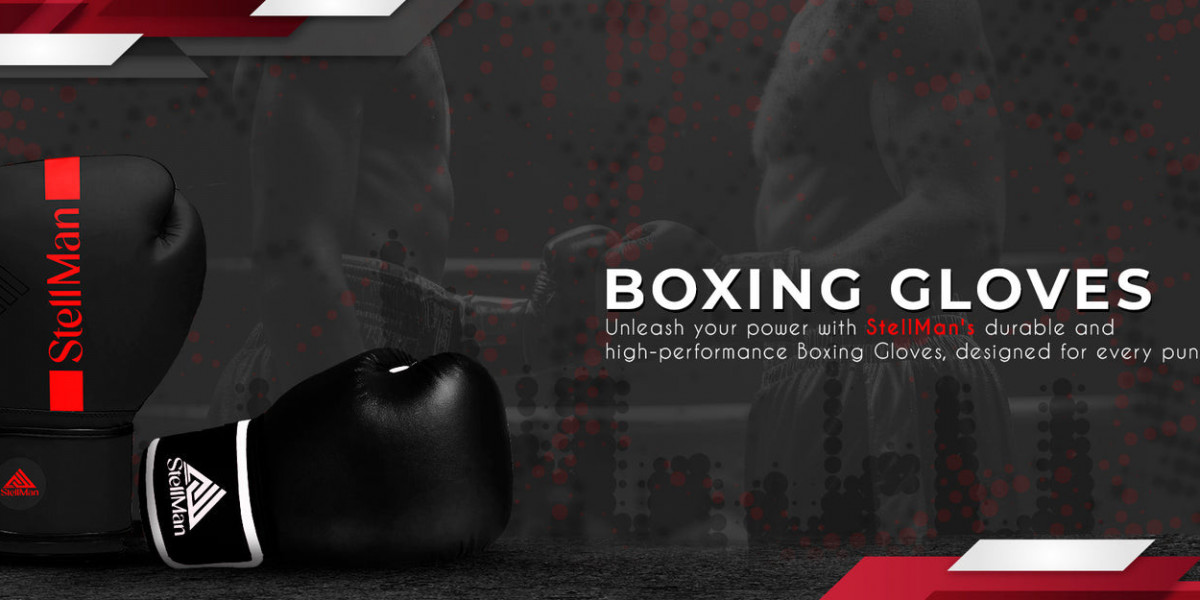Boxing is one of the most physically demanding and strategic sports in the world. Whether you're a seasoned fighter or just starting your boxing journey, choosing the right equipment can make all the difference. Not only does the right gear improve your performance, but it also protects you from injuries while providing the comfort and confidence you need to excel.
Choosing the best fighting sports gear and boxing equipment can be a daunting task given the wide variety of options available. To help you navigate through this process, we’ve broken down the essential gear you need and offered tips on how to choose the best options for your needs.
1. Boxing Gloves: The Heart of Your Gear
Boxing gloves are arguably the most important piece of equipment for any boxer. They protect your hands, wrists, and knuckles while you throw punches, and they also safeguard your opponent during sparring or a match. Choosing the right pair of gloves is essential for both performance and safety.
Types of Boxing Gloves:
Training Gloves: These are multi-purpose gloves designed for general workouts. They offer a balance between protection and comfort and are great for bag work, mitt work, and sparring.
Bag Gloves: These gloves are designed specifically for heavy bag training. They are usually lighter, with less padding, since the focus is on punching power and endurance rather than protection during contact with an opponent.
Sparring Gloves: Sparring gloves are designed to provide maximum protection to both you and your partner. They tend to have more padding than bag gloves, and they are designed to cushion impact during sparring sessions.
Competition Gloves: These gloves are worn during actual fights. They are typically lighter than training gloves and are designed to deliver fast and powerful punches.
How to Choose:
Size: Boxing gloves come in various sizes, typically ranging from 8oz to 16oz. Lighter gloves (8oz-10oz) are generally used for competition, while heavier gloves (12oz-16oz) offer more protection and are better for training and sparring.
Fit: The gloves should fit snugly without being too tight. Make sure there’s enough room for hand wraps, which are essential for added protection.
Material: Leather gloves are generally more durable and offer better breathability than synthetic options, but synthetic gloves tend to be more affordable.
2. Hand Wraps: Support and Stability for Your Hands
Hand wraps are an often-overlooked but vital piece of boxing equipment. They protect the fragile bones and joints in your hands and wrists, providing extra support and preventing injuries.
Types of Hand Wraps:
Traditional Hand Wraps: These long, cloth wraps require you to manually wrap your hands before training. They offer the most customization and can provide a snug fit.
Elastic Hand Wraps: These wraps are quicker to apply and usually come with velcro for easy fastening. They are not as customizable but still provide good support.
How to Choose:
Material: Hand wraps come in cotton or a mix of cotton and elastic. Cotton hand wraps are comfortable but may stretch out over time. Wraps with a mix of elastic are more durable and provide a better fit.
Length: Hand wraps typically range from 108” to 180”. Longer wraps are better for those who want more coverage and security, while shorter wraps can be quicker and more convenient for beginners.
3. Headgear: Safety First
Headgear is essential for sparring, as it helps protect your head, face, and ears from blows. While headgear cannot fully prevent concussions or serious head injuries, it significantly reduces the risk of cuts, bruises, and other damage during sparring sessions.
Types of Headgear:
Full-Face Headgear: This headgear covers the entire face, including the chin and cheeks, offering maximum protection.
Open-Face Headgear: Open-face headgear protects the head and temples but leaves the face exposed for better visibility and comfort.
How to Choose:
Fit: A properly fitted headgear should cover the forehead and extend around the back of the head without being too tight. Look for adjustable straps to get a snug fit.
Padding: Look for headgear with adequate padding around the crown of the head, cheeks, and chin. More padding will generally provide better protection.
Visibility: Make sure the headgear doesn’t impair your peripheral vision, especially if you plan on sparring. Visibility is key to defensive skills.
4. Mouthguards: Protect Your Teeth and Jaw
A mouthguard is an inexpensive yet essential piece of equipment. It protects your teeth, gums, and jaw during sparring or fights. Boxing can be brutal, and a well-fitted mouthguard can make a significant difference in preventing dental and jaw injuries.
Types of Mouthguards:
Stock Mouthguards: These are pre-formed and ready to use but tend to be bulky and uncomfortable. They offer basic protection but don’t provide a snug fit.
Boil-and-Bite Mouthguards: These mouthguards soften when heated in hot water and can be molded to fit your teeth for a better, more comfortable fit.
Custom Mouthguards: These are made by a dental professional to precisely fit your teeth and gums. They offer the best protection and comfort but come at a higher price.
How to Choose:
Fit: A well-fitting mouthguard should cover your upper teeth and fit snugly over your gums, providing maximum protection.
Comfort: The mouthguard should not feel bulky or obstruct your breathing. A comfortable fit will help you focus better during your training and sparring.
5. Footwear: Stability and Agility
In boxing, your feet play a crucial role in your ability to move quickly and maintain balance. The right pair of boxing shoes provides the stability you need for quick lateral movements and pivots in the ring.
How to Choose:
Grip: Look for boxing shoes with a smooth sole that offers traction without sticking to the canvas. This will allow you to move quickly without the risk of slipping.
Ankle Support: A high-top shoe will provide added ankle support, reducing the risk of twisting or spraining your ankle during quick movements.
Lightweight: Boxing shoes should be lightweight, allowing for quick footwork and ease of movement. Avoid bulky shoes that might weigh you down.
6. Other Essential Gear:
While gloves, headgear, mouthguards, and shoes are the primary items, a few other pieces of equipment can be helpful for training and improving your boxing skills:
Focus Mitts: These are used by trainers to work on your accuracy, timing, and combination skills.
Heavy Bag: A heavy bag is essential for practicing power punches and improving endurance.
Jump Rope: Jump ropes are an excellent tool for enhancing foot speed, rhythm, and overall cardiovascular conditioning.
Conclusion:
Choosing the best boxing equipment and fighting sports gear ultimately comes down to your needs, preferences, and training goals. Investing in high-quality gear ensures that you not only perform better but also stay safe during your training and competition. Remember, your gear should work with you, not against you, so take the time to choose the right equipment for your specific needs.
With the right gloves, headgear, hand wraps, and shoes, you’ll be ready to take your boxing skills to the next level. Now, it’s time to gear up and start training for your best fight yet!







